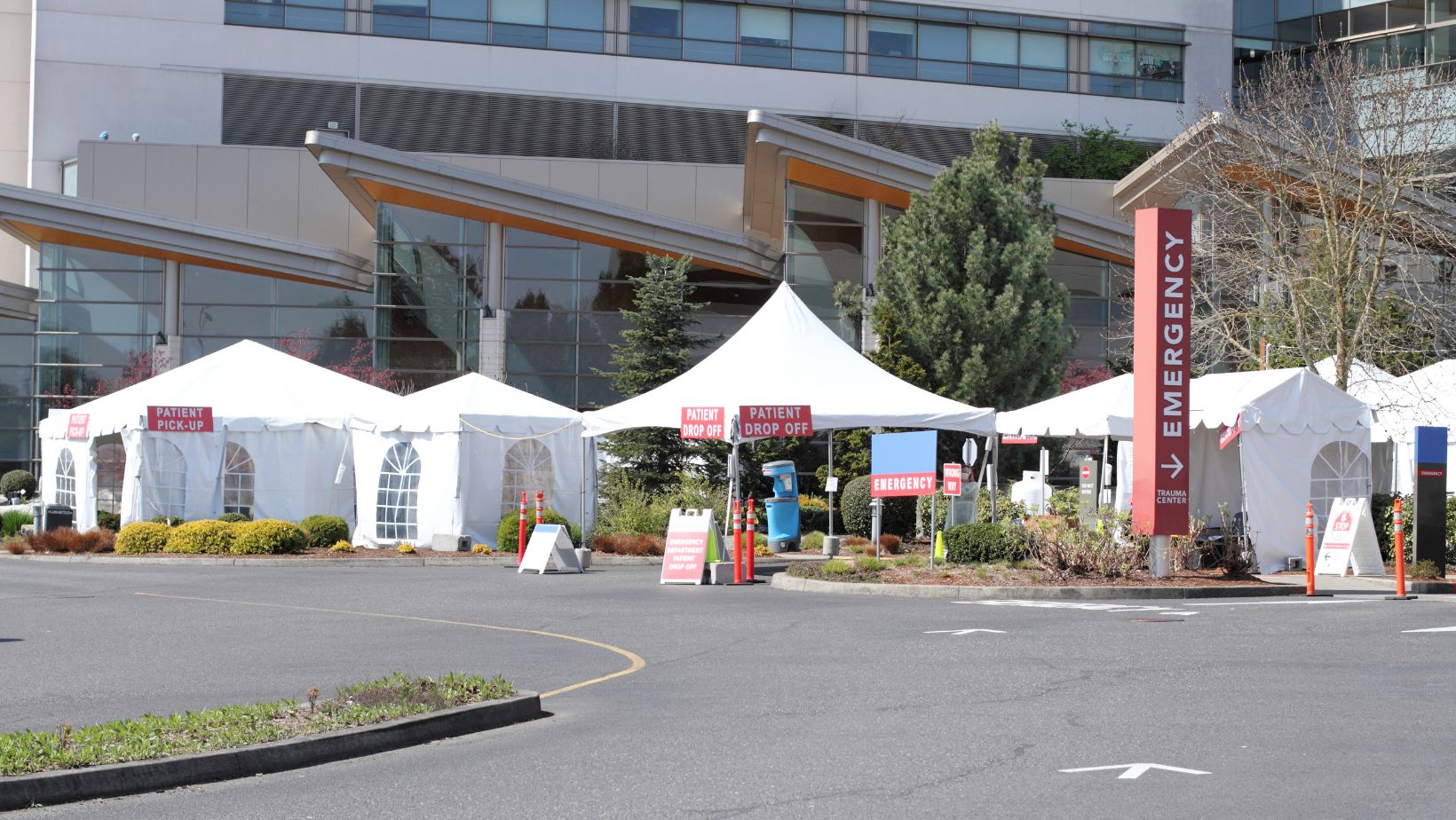
When disaster hits, whether it’s a natural disaster or something caused by humans, getting medical help quickly becomes super important. That’s where medical tents come in handy. These tents are essential in emergencies, offering a place for triage, treatment, and even surgeries. Over the years, from war zones to areas hit by earthquakes, these portable shelters have shown just how valuable they are. Let’s take a closer look at how versatile medical tents are and how they’ve become crucial in disaster response, constantly evolving to save lives.
Types of Medical Tents
Medical tents come in different styles, each with its own perks for handling different types of disaster situations.
- Inflatable Tents: Recognized for their swift setup, this type of medical tent can be rapidly deployed with the use of air pumps, making them highly suitable for emergencies. Their lightweight and compact design facilitates easy transportation to remote or inaccessible disaster zones. The air-filled structure of these tents offers insulation, ensuring a comfortable interior environment in both hot and cold weather conditions.
- Pole-Supported Tents: These classic tents use a framework of poles to provide support. They are renowned for their durability and stability, and they are capable of enduring severe weather conditions. Pole-supported tents offer ample interior space, making them suitable for larger medical facilities or when a greater capacity for patients is required.
- Structure-Supported Tents: Engineered for maximum durability and longevity, these tents employ a combination of rigid frames and fabric coverings, offering excellent protection against the elements. Often used for semi-permanent medical facilities in extended disaster response efforts, structure-supported tents provide a more robust solution compared to inflatable or pole-supported alternatives.
Adaptability to Diverse Environments
Beyond their structural differences, medical tents are designed with adaptable features to suit a range of climates and terrains.
- Climate Control: Many tents incorporate ventilation systems or insulation materials to regulate temperature and humidity, ensuring a comfortable environment for both patients and medical staff.
- Flooring Options: Tents can be equipped with raised flooring to provide insulation and protect against moisture or uneven ground.
- Electrical Systems: Integrated electrical systems allow for lighting, medical equipment operation, and climate control, enhancing the functionality of the tent.
- Anchoring Systems: Tents come with various anchoring options to secure them to different types of terrain, whether it’s soft soil, hard ground, or even asphalt.
The versatility of medical tents lies in their ability to be customized and equipped to meet the specific challenges posed by each disaster response scenario, ensuring that critical medical care can be delivered wherever and whenever it’s needed most.
Capabilities and Functions
Medical tents are far more than simple shelters; they function as adaptable healthcare hubs equipped to handle a range of critical medical services.
- Triage and Emergency Care: In the initial phases of a disaster, medical tents serve as triage centers, where incoming patients are quickly assessed and prioritized for treatment based on the severity of their injuries or illness. This rapid evaluation ensures that those in most urgent need receive immediate care.
- Surgical Facilities: In more advanced setups, medical tents can be transformed into operating rooms, complete with surgical tables, lighting, and sterilization equipment. These temporary surgical facilities allow for life-saving procedures to be performed on-site, even in the most challenging environments.
- Isolation and Quarantine: Medical tents play a vital role in infectious disease outbreaks, providing designated areas to isolate and quarantine patients, thereby preventing the spread of contagious illnesses. These isolation units can be equipped with negative pressure systems and other measures to ensure the safety of both patients and healthcare workers.
- Pharmacy and Supply Storage: Tents can also house pharmacies, storing essential medications and medical supplies, ensuring that healthcare providers have the resources they need to deliver effective care.
Integration of Technology and Medical Equipment
The capabilities of medical tents have been further enhanced by the integration of modern technology and specialized medical equipment.
- Portable Diagnostic Tools: Compact ultrasound machines, X-ray devices, and laboratory equipment can be easily transported and set up within tents, enabling rapid diagnosis and treatment.
- Telemedicine Systems: These systems allow medical personnel in the field to consult with specialists remotely, accessing expert advice and guidance for complex cases.
- Electronic Health Records (EHRs): Digital record-keeping systems facilitate efficient patient management and data tracking, even in the midst of a crisis.
- Renewable Energy Sources: Solar panels and other renewable energy sources can power medical tents, ensuring their operation even in areas with limited infrastructure.
The combination of adaptable structures, essential medical services, and cutting-edge technology makes medical tents indispensable assets in disaster response, providing a lifeline of healthcare to those affected by crises.
Logistics and Setup
The effectiveness of medical tents in disaster response hinges on swift deployment and efficient logistics. Here’s an overview of the process:
Rapid Deployment Steps

- Site Assessment: Disaster response teams evaluate potential sites, considering factors like terrain, accessibility, proximity to the affected population, and the availability of utilities.
- Tent Selection: The appropriate type of tent is chosen based on the specific needs of the situation, taking into account climate, duration of use, and the required medical services.
- Transportation and Unloading: Tents and associated equipment are transported to the site, often by air or land, depending on the accessibility of the area.
- Assembly: Trained personnel quickly assemble the tents, following manufacturer guidelines. Inflatable tents can be erected in minutes, while pole-supported and structure-supported tents may take longer.
- Interior Setup: Once the tent is assembled, the interior is configured for its intended purpose, whether it’s triage, surgery, isolation, or other medical services. Equipment is installed, and supplies are organized.
Medical Tents: A Beacon of Hope in Crisis
Medical tents have evolved far beyond their simple origins as temporary shelters. They are now recognized as essential components of modern disaster response strategies, offering adaptable solutions to meet a wide range of medical needs in challenging environments. Whether providing immediate triage and stabilization, facilitating complex surgeries, or serving as isolation units during outbreaks, these versatile structures play a critical role in saving lives and mitigating suffering.













